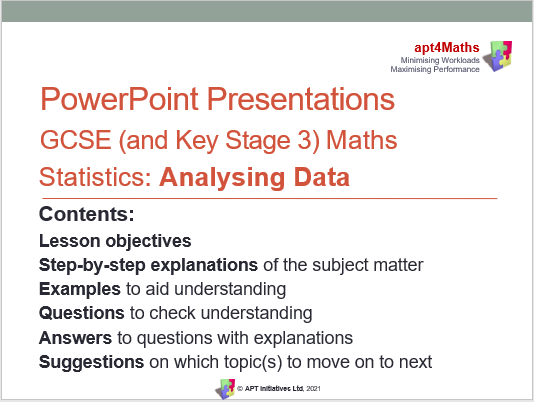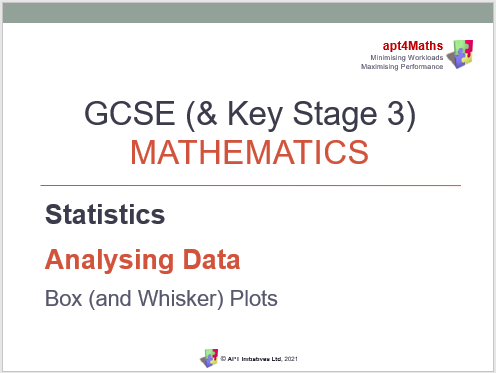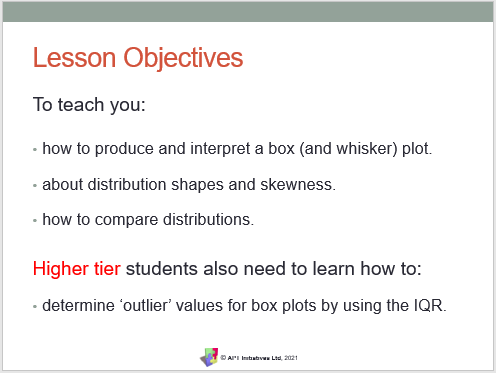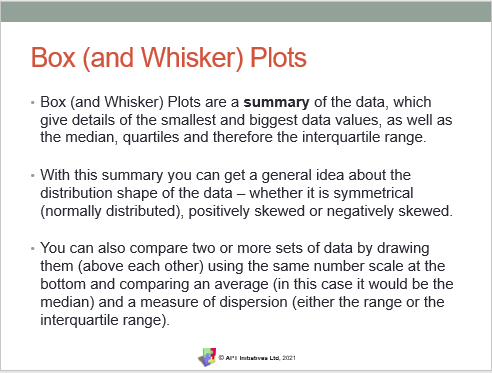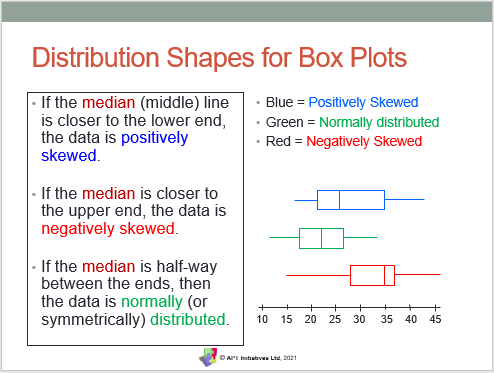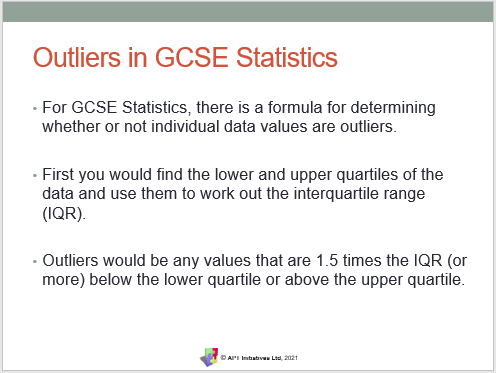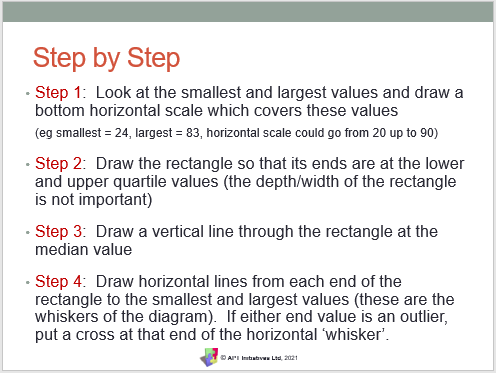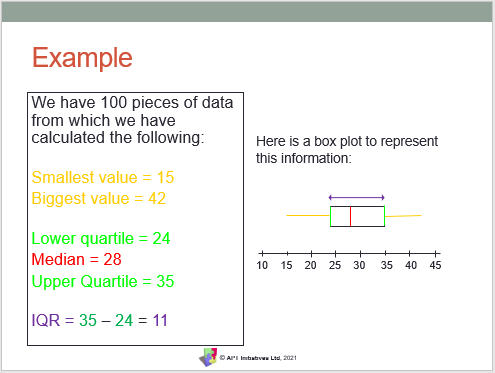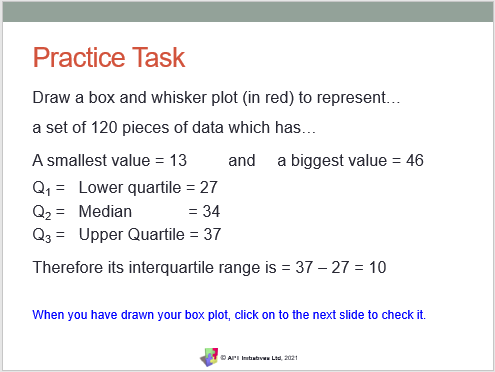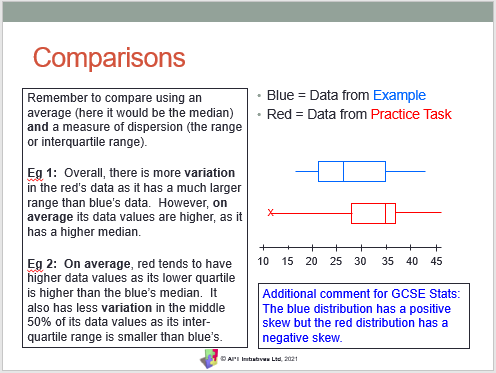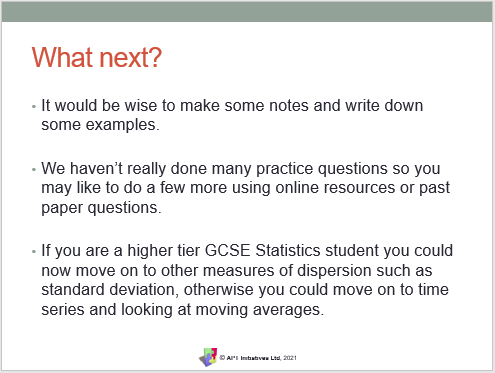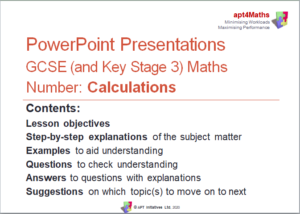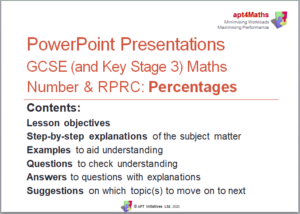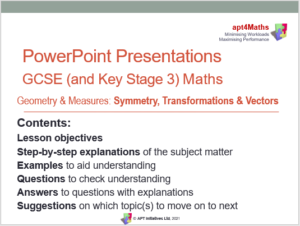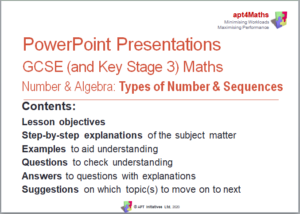apt4Maths: Set of 7 PowerPoint Presentations (Relating to Statistics) on Analysing Data for GCSE (and Key Stage 3) Mathematics
From £15.00 ex VAT
If you are a school/college and would like to place an order and be INVOICED later, please email sales@apt-initiatives.com.
This set of 7 PowerPoint Presentations, written by a highly experienced teacher (of 25+ years), senior examiner and reviser for Maths and Stats examinations, are designed for use by:
- any teacher – not necessarily a maths specialist – as part of their own delivery of lessons.
- students working independently.
They can be used by:
- cover teachers.
- students who are unable to attend their lesson in person.
Each PowerPoint Presentation includes:
- Lesson objectives
- Step-by-step explanations of the subject matter
- Examples to aid understanding
- Questions to check understanding
- Answers to questions, with explanations
- Suggestions regarding which topic(s) should be moved on to next.
These PowerPoint Presentations relate to the ‘Statistics’ sections of the Maths specifications. Other sets relating to Statistics concern:
- Collecting & Presenting Data
- Probability
Product Information
This set of 7 PowerPoint Presentations (129 slides, excluding Title Pages) covers the following statistical-based topics relating to ‘Analysing Data’:
- 01 Averages – Mode (19 slides): Reviews and interprets different types of data representations (charts, tables and graphs) before explaining what a modal average is and how to find the mode for qualitative or discrete data. It also explains how to find the modal class for grouped or continuous data.
- 02 Averages – Median (19 slides): Reviews and interprets different types of data representations before explaining what a median average is, how to find the median for discrete data, and how to find the median class for grouped or continuous data. It also explains how to calculate an estimate of the median for continuous data.
- 03 Averages – Mean (19 slides): Reviews and interprets different types of data representations before explaining what a mean average is, how to find the mean for discrete data, and how to calculate an estimate of the mean for grouped or continuous data.
- 04 Measures of Dispersion – Range (16 slides): Reviews and interprets different types of data representations before explaining how to calculate the range for discrete data and how to calculate the maximum range for grouped or continuous data.
- 05 Measures of Dispersion – Interquartile Range (20 slides): Explains how to calculate the interquartile range for discrete data, and how to find the interquartile range from a cumulative frequency curve or polygon. It also explains how to estimate the interquartile range for continuous data.
- 06 Cumulative Frequency (25 slides): Explains how to produce and interpret a cumulative frequency table, how to draw and interpret cumulative frequency curves or polygons, and how to find quartiles, deciles and percentiles as well as the interpercentile range.
- 07 Box (and Whisker) Plots (11 slides): Explains how to produce and interpret a box (and whisper) plot, and explains about distribution shapes and skewness, and how to compare distributions. It also explains how to determine ‘outlier’ values for box plots using the IQR.
Note:
- Whilst finding averages from stem and leaf diagrams and histograms is demonstrated in some of the PowerPoint Presentations within this pack of work, the work on drawing up a stem and leaf diagram or a histogram is included in APT’s set of PowerPoints on ‘Collecting & Presenting Data’.
- Additional PowerPoints are available to supplement the three GCSE Mathematics statistics packs (‘Collecting & Presenting Data’, ‘Analysing Data’ and ‘Probability’) to cover the additional topics required for GCSE Statistics, such as population pyramids, choropleth maps, weighted mean, geometric mean, time series (and moving averages), standard deviation, variance and distributions (including skewness coefficients), birth and death rates, base rates, price indexes, standardised rates, quality assurance and a variety of correlation coefficients.

